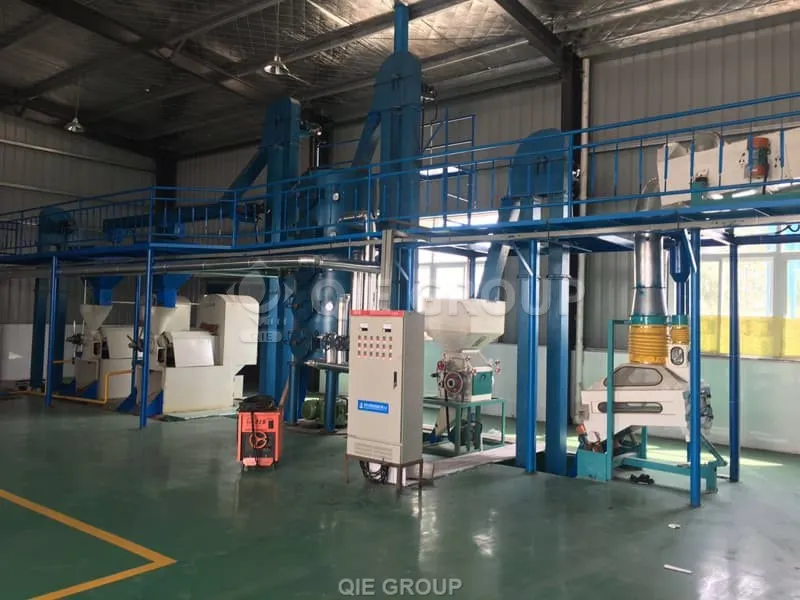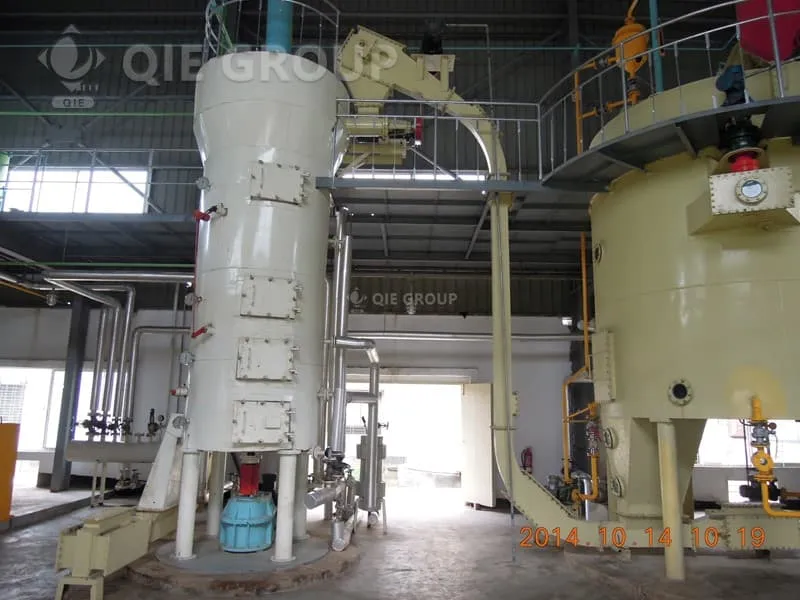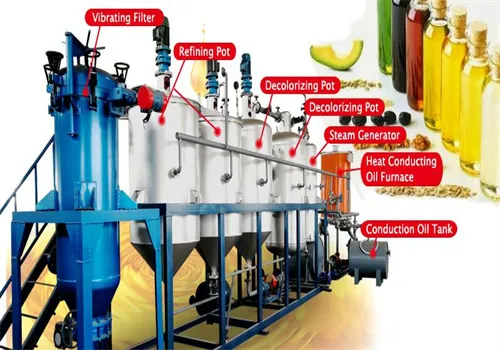
Rice bran oil production line, as the name implies, is a complete set of equipment system specially used for extracting and refining rice bran oil from rice bran. It integrates multiple links such as raw material pretreatment, oil pressing, refining and purification, and realizes the automated and continuous production from rice bran to finished oil. Rice bran oil production line not only improves production efficiency and reduces production costs, but also ensures the quality and safety of rice bran oil, providing consumers with a healthier and more reliable edible oil choice.
During the cleaning process, magnetic separation technology is used to remove iron impurities mixed in the rice bran, and a vibrating screen is used to separate other impurities such as broken rice from the rice bran to ensure the purity of the rice bran raw material.
Extrusion process
This process uses an extrusion puffing machine, which has dual advantages: on the one hand, it can increase the yield of rice bran oil, and on the other hand, it helps to reduce energy consumption in the production process. During the extrusion puffing process, the solute lipase inside the rice bran will undergo a passivation reaction under high temperature and high pressure, effectively preventing the rice bran oil from becoming rancid. In addition, extrusion puffing can also make the rice bran form porous material particles, increase the bulk density of the material, thereby increasing the permeability and leaching rate when the solvent reacts with the material, creating favorable conditions for subsequent oil extraction.
Drying process
The moisture content of puffed rice bran is about 12%, while the optimal moisture content required for the solvent extraction process is 7-9%. In order to make the moisture content of puffed rice bran reach the optimal standard of the leaching process, an effective drying method must be adopted. The countercurrent dryer is selected here to accurately control the moisture and temperature to meet the requirements of the subsequent leaching process, and ultimately achieve the purpose of increasing the oil yield and ensuring the quality of the oil.

Germ→extraction→wet meal→evaporation→cooling→finished meal packaging
↓
Mixed oil → filtration → negative pressure evaporation → crude oil
↓
Solvent Recovery
The expanded rice bran can be sent to the leaching equipment for solvent extraction and oil production. The solvent extraction method adopts the principle of solid-liquid extraction, selects a certain organic solvent that can dissolve oil, sprays and soaks the rice bran, makes it fully contact with the oil, and extracts oil from the oil. The production of rice bran oil by leaching has the advantages of high oil yield, high economic benefits, and good meal quality. The leaching process has high production efficiency and high degree of mechanization, and is suitable for large-scale oil production. However, the crude rice bran oil after leaching contains various impurities and solvent residues during the leaching process, so it is necessary to refine and remove impurities from the crude rice bran oil after leaching.

Rice bran crude oil→phosphoric acid degumming→washing and drying→dewaxing→decolorization→physical deacidification and deodorization→degreasing→finished oil
Degumming: removes the colloid-soluble substances in rice bran oil, which are a mixture of various impurities such as phospholipids, proteins, sugars, resins, etc. The presence of these impurities is the key factor that causes the edible oil to become dark and turbid, thus affecting its storage stability.
Deacidification: If the free fatty acid content in rice bran oil exceeds the standard, it will produce an unpleasant pungent odor and affect the overall flavor of the oil. Free fatty acids will not only accelerate the oxidation process of oils and phospholipids, but also increase the solubility of water in oils as the free fatty acid content increases. Therefore, these free fatty acids must be removed.
Decolorization: Decolorization can effectively improve the color of oil products and enhance their appearance quality. At the same time, this process can also remove polycyclic aromatic hydrocarbons, pesticide residues and harmful substances produced by oxidation and deterioration in oil products.
Deodorization : It is used to eliminate various "odors" in rice bran oil. These odors may come from the natural flavor of the edible oil itself, or they may be burnt, solvent or bleaching earth odors produced during the processing. These unpleasant odors will seriously affect the quality of the edible oil. The deodorization process is usually carried out in a high temperature vacuum environment, using the principle of steam distillation to remove odorous substances.
Dewaxing: Rice bran oil contains a small amount of rice bran wax, which is a waxy component that cannot be absorbed by the human body. Under high temperature conditions, it will dissolve in the oil; when the temperature drops, it will solidify and precipitate, thus affecting the quality of rice bran oil. Therefore, it needs to go through a dewaxing process, first cooling it to crystallize, and then using a plate and frame filter to separate the oil and wax.

The above is the general workflow of the rice bran oil production line. If you want to know more about the rice bran oil production process and rice bran oil processing equipment, please leave a message for consultation. QIE Group can provide you with equipment solutions, plant design drawings and production lines free of charge according to your actual situation.

